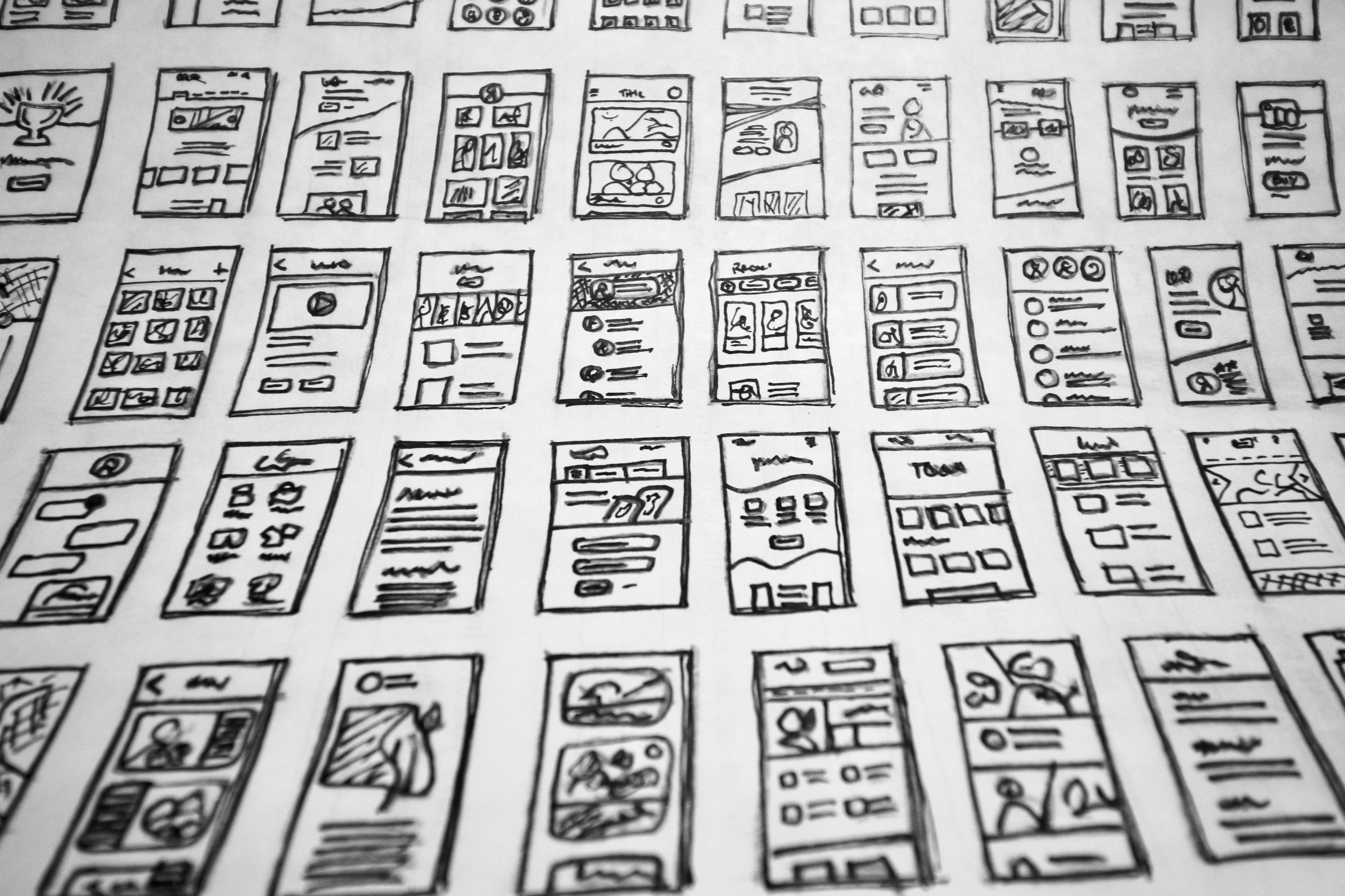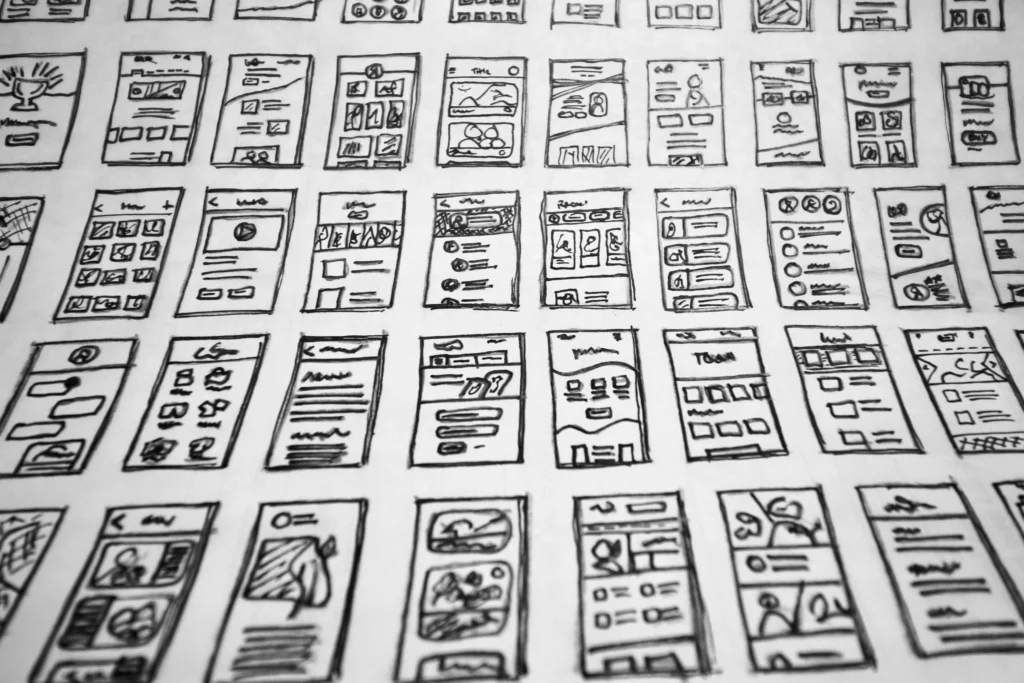
Introduction to UI/UX Design Trends
In the rapidly evolving digital landscape, staying updated with UI/UX design trends is paramount for businesses and designers alike. The user interface (UI) and user experience (UX) design significantly impact how users interact with products and services. As technological advancements continue to reshape user expectations, the importance of adapting design strategies to meet these changes cannot be overstated. Engaging users and maximizing conversions hinges on understanding and implementing contemporary design trends that resonate with users’ needs and preferences.
The significance of UI/UX design trends lies not just in aesthetics but also in functionality and user satisfaction. An effective design creates a seamless experience, encouraging users to engage more deeply with the content presented. As we approach 2025, various focus areas are emerging that aim to enhance user engagement while driving conversions. Trends such as personalized experiences, inclusive design, and augmented reality interfaces are shaping the future of design. Understanding these trends allows designers and businesses to create user-centric solutions that not only attract attention but also encourage loyalty and repeat interactions.
Moreover, as digital devices continue to proliferate, the demand for intuitive and engaging user experiences will grow. Staying abreast of emerging UI/UX design trends allows businesses to anticipate user needs and preferences, ensuring their offerings remain relevant in a competitive marketplace. This exploration will delve into several key trends expected to dominate in 2025, highlighting their potential to elevate user engagement and optimize conversion rates. By embracing these trends, organizations can position themselves for success in an increasingly dynamic environment.
The Minimalist Approach: Less is More
In recent years, the minimalist approach in UI/UX design has gained significant traction, aligning well with the evolving preferences of users. This design philosophy emphasizes the reduction of extraneous elements and a focus on essential features, thereby streamlining the user experience. By eliminating visual clutter, designers can foster intuitive interactions that guide users effortlessly through digital spaces.
One of the primary benefits of a minimalist design is its impact on load times. By simplifying interfaces—removing heavy graphics, excessive animations, and unnecessary text—designers can enhance page speed. Faster load times are crucial in retaining users’ attention, as studies indicate that a mere second of delay can lead to significant drop-off rates. Therefore, adopting a minimalist approach not only optimizes performance but also aligns with the user’s expectation for immediate responsiveness.
Moreover, this simplification aids in enhancing user focus. With fewer distractions, users are more likely to concentrate on core functions or call-to-action buttons, leading to improved engagement. When users can clearly identify what they need to do, whether it’s signing up for a newsletter or completing a purchase, the likelihood of conversions increases. Thus, a well-executed minimalist design can directly affect an organization’s bottom line by driving higher conversion rates.
Ultimately, as UI/UX trends continue to evolve, the minimalist approach remains relevant in creating experiences that resonate with users. By prioritizing clarity and functionality over embellishments, designers can create engaging, efficient interfaces that not only captivate but also convert. This trend signifies a shift towards honoring user-centric design, ensuring that their needs and preferences are at the forefront of the digital landscape.
Micro-Interactions: Creating Engaging Experiences
In the ever-evolving landscape of UI/UX design, micro-interactions play a pivotal role in enhancing user engagement and improving conversions. Micro-interactions are small, subtle animations or responses that occur when users interact with various elements of an interface. These can range from a button changing color when hovered over to a subtle loading animation that indicates an action is taking place. By providing immediate feedback, micro-interactions guide users through their journey and contribute to an overall sense of control.
One of the fundamental benefits of micro-interactions is their ability to enhance usability. When users receive instant feedback, they are more likely to understand the outcome of their actions. For instance, if a user submits a form, a brief animation confirming that their submission was successful can prevent uncertainty and foster a sense of accomplishment. This not only aids in navigation but also builds trust in the application. Furthermore, micro-interactions can lead to a more intuitive experience by helping users recognize patterns within the interface, thereby enhancing their ability to maneuver through complex layouts.
Moreover, micro-interactions add a layer of personality to applications, making them feel more responsive and alive. This personalization creates an emotional connection with users, enhancing engagement. By integrating playful elements, such as animated emojis responding to user input or celebratory confetti after completing a task, designers can foster a positive atmosphere that encourages interaction. The key lies in striking a balance between functionality and delight while ensuring that these micro-interactions do not distract from the primary objectives of the application.
In essence, micro-interactions serve as a vital tool in the UI/UX designer’s toolkit, transforming a straightforward interaction into an engaging experience. Their implementation can significantly elevate the overall quality of the user experience, leading to increased engagement and, ultimately, conversions.
AI-Powered Personalization: Tailoring User Experiences
The integration of artificial intelligence (AI) into UI/UX design is rapidly transforming the way digital products interact with users. AI technologies leverage vast amounts of data to analyze user behavior, preferences, and interactions. This analysis allows designers to create personalized user experiences that are not only functional but also resonate with individual users, enhancing their satisfaction and increasing conversion rates.
By utilizing sophisticated algorithms, designers can identify patterns in user behavior. This capability enables the prediction of users’ needs, allowing for the proactive delivery of tailored content and recommendations. For instance, e-commerce platforms deploy AI to analyze past purchases and browsing habits. As a result, they can present users with personalized product suggestions, thereby creating a more engaging shopping experience. The effectiveness of such tailored experiences often leads to higher conversion rates, as users are more likely to interact with content that is directly relevant to them.
In addition to content recommendations, AI can also optimize the user interface itself. Machine learning algorithms can dynamically rearrange UI elements based on user interactions, ensuring that essential features are highlighted according to individual preferences. For instance, if a user frequently accesses a particular feature, the AI can place it in a more prominent position within the interface, minimizing search time and maximizing efficiency.
The continual evolution of AI technologies offers vast potential for designers to implement advanced personalization strategies. As we progress toward 2025, the focus will remain on harnessing AI to craft more adaptive and intuitive user experiences. By prioritizing user-centric design reinforced by AI capabilities, businesses can not only enhance user engagement but also drive higher conversion rates, creating a win-win scenario for both users and organizations alike.
Mobile-First Design: Meeting User Needs on the Go
In an era where mobile devices dominate internet usage, mobile-first design has emerged as a crucial strategy for enhancing user engagement. This approach prioritizes the creation of websites and applications for mobile users, ensuring that the design is intuitive, responsive, and effective on smaller screens. By placing mobile users at the forefront of the design process, businesses can significantly improve accessibility and usability, leading to better overall performance and increased conversion rates.
Responsive design is foundational to mobile-first strategies. It involves creating layouts that adapt fluidly to different screen sizes, ensuring that users have a consistent and enjoyable experience regardless of the device they are using. The essence of responsive design lies in utilizing flexible grids, images, and CSS media queries, which automatically adjust the content’s layout. As users increasingly rely on smartphones and tablets for browsing, the importance of implementing responsive design cannot be overstated. When users encounter a website that performs seamlessly on their devices, it encourages longer engagement and fosters trust in the brand.
Moreover, adopting a mobile-first design approach can yield substantial advantages in terms of conversions. When a website is optimized for mobile, users can easily navigate through the content and engage with calls-to-action without frustration. Features such as thumb-friendly buttons, simplified navigation, and faster load times can significantly reduce bounce rates and enhance user satisfaction. As mobile commerce continues to thrive, companies that embrace mobile-first design will find themselves better positioned to capture the growing segment of mobile users who are ready to make purchases or interact with services while on the go.
Incorporating mobile-first design strategies is not merely a trend but a vital necessity for organizations aiming to meet the needs of their users effectively. This focus on mobile usability will ultimately lead to enriching user experiences that translate into measurable business outcomes.
Accessibility in Design: Inclusivity Matters
Accessibility in UI/UX design is not merely a legal requirement; it represents a critical aspect of creating inclusive experiences for all users, including those with disabilities. As organizations increasingly recognize the importance of reaching a broader audience, the incorporation of best practices in accessible design becomes paramount. The essence of accessibility is to ensure that everyone, irrespective of their abilities, can effectively engage with digital products. By adopting an inclusive approach, organizations can enhance user engagement and ultimately expand their customer base.
One of the key practices in accessible design is incorporating semantic HTML elements that aid screen readers in interpreting content accurately. For instance, using headings to structure content not only helps visually impaired users navigate easily but also benefits all users by improving overall readability. Furthermore, color contrast plays a significant role in accessibility; ensuring sufficient contrast between text and background colors can significantly enhance comprehension for users with visual impairments. Additionally, it is essential to provide alternative text for images, which conveys information to those using assistive technologies.
Moreover, the implementation of keyboard navigability is vital for users who cannot use a mouse. Designing interfaces that allow users to maneuver through pages using keyboard shortcuts ensures that everyone can access critical functionality. Testing designs with real users, including individuals with disabilities, can provide insightful feedback and highlight areas for improvement. Each iteration can contribute to making products more accessible and user-friendly.
Ultimately, prioritizing accessibility in UI/UX design not only fulfills a social responsibility but can also translate into better user retention and satisfaction. With inclusivity at the forefront, organizations can cultivate a culture of empathy, leading to innovative solutions that cater to the diverse needs of the community.
Trends’ Impact on User Engagement
User engagement is a crucial factor in the success of any digital platform, and the emerging UI/UX design trends for 2025 are poised to significantly enhance this engagement. By focusing on more intuitive interfaces and personalized experiences, these trends will reshape how users interact with digital products. Understanding user behavior through analytics is a key element in harnessing the benefits of these trends. With enhanced analytical tools, designers can gain insights into user preferences, allowing them to create more targeted and relevant experiences.
The rise of interactive elements, such as micro-interactions and gamification, is another pivotal trend that will drive user engagement. By incorporating these dynamic features, designers can create an immersive experience that not only captures attention but also keeps users coming back. Such engagement goes beyond mere interaction; it fosters a deeper connection between users and brands, paving the way for increased loyalty. Users who enjoy a seamless and engaging experience are more likely to return to a website or application, making them valuable assets for businesses.
Furthermore, the emphasis on accessibility and inclusive design ensures that a wider audience can engage with digital platforms. As UI/UX trends evolve to prioritize inclusivity, businesses will benefit from a more diverse user base. Engaging different demographics effectively is essential for cultivating brand loyalty and encouraging word-of-mouth referrals. As a result, the trends that emerge in 2025 will not only focus on aesthetics and functionality but will also aim to connect with users on a deeper level.
Ultimately, by leveraging these upcoming trends in UI/UX design, businesses can create meaningful interactions that resonate with users. The cumulative effect of these trends will be a substantial boost in user engagement, leading to increased conversions and long-term customer relationships. Understanding and adapting to these evolving trends is key to thriving in an increasingly competitive digital landscape.
Influencing Conversions Through Design
In the realm of digital marketing, the influence of UI/UX design on conversion rates cannot be overstated. As businesses increasingly rely on their online presence, understanding how design choices affect user engagement and ultimately lead to conversions becomes crucial. UI/UX trends emerging for 2025 are set to enhance these interactions, making it easier for users to navigate websites and applications, thus facilitating a smoother journey towards desired actions, such as sales or sign-ups.
One key strategy is the implementation of a minimalist design, which emphasizes simplicity. This approach enables users to focus on critical elements such as call-to-action buttons and essential content without unnecessary distractions. By reducing cognitive overload, websites can lead potential customers directly to conversion points, improving the chances of generating a favorable response. Additionally, employing engaging visual hierarchies through strategic placement of elements allows for a more intuitive navigation experience that guides users along their path to purchase or engagement.
Furthermore, personalization in UI/UX design for 2025 will play a crucial role in fostering connections between brands and their audiences. By leveraging user data, designers can create tailored experiences that resonate with individual preferences. This personal touch not only enhances user satisfaction but can also significantly boost conversion rates, as users are more likely to engage with interfaces that feel familiar and relevant to their needs.
Moreover, incorporating interactive elements such as micro-animations and responsive feedback can enrich the user experience. These elements create a dynamic environment that keeps users engaged while seamlessly leading them toward desired actions. As brands begin to adopt these trends, it is essential to remember that user-centric designs focused on usability and interaction will be at the forefront of driving conversions effectively in 2025.
Future-Proofing Design Choices
As we look towards the future of UI/UX design in 2025, it is imperative for brands to adopt strategies that not only meet current user expectations but are also adaptable to emerging technologies. The digital landscape is characterized by rapid evolution, which necessitates a proactive approach in design choices that can ensure sustained relevance and user engagement.
One of the most significant ways to future-proof a brand’s digital presence is through the integration of advanced technologies. For instance, the increasing incorporation of artificial intelligence (AI) and machine learning (ML) into design processes is proving instrumental in tailoring user experiences. These technologies analyze user behavior, preferences, and feedback, enabling designers to create interfaces that predict and adapt to individual needs. As a result, brands can foster user loyalty by providing a personalized experience that resonates with their audience.
Moreover, it is crucial for designers to stay attuned to changing user expectations, which are constantly influenced by technological advancements and cultural shifts. Simplified navigation, accessibility features, and immersive experiences through augmented reality (AR) and virtual reality (VR) are becoming standard expectations from users. By staying ahead of these trends, brands can avoid obsolescence and reinforce their market position.
Equally important is the practice of regular user testing and feedback loops. Continuous iteration based on user insights can significantly enhance the design and functionality of digital platforms. Engaging users in the design process not only helps in fine-tuning the interface but also builds a community of loyal customers who feel valued and heard.
In conclusion, embracing and adapting to the UI/UX design trends of 2025 is essential for brands aiming to future-proof their digital presence. By prioritizing advanced technologies, understanding user expectations, and incorporating user feedback, companies can enhance user engagement and conversion rates while ensuring long-term success in their digital strategies.
Conclusion: Embracing Upcoming Trends
As we look forward to the UI/UX design landscape of 2025, it is evident that the integration of innovative trends will play a crucial role in enhancing user experiences and boosting conversions. The trends discussed in this blog post—such as immersive experiences, the rise of hyper-personalization, and adaptive interfaces—underscore a shift towards a more intuitive and engaging user interaction. These advancements are not merely aesthetic; they are pivotal in addressing user needs and preferences in real-time, thereby driving greater satisfaction and loyalty.
To remain competitive, designers and businesses must not only stay informed of these trends but actively implement them in their strategies. Adopting an anticipatory approach toward UI/UX design will enable organizations to create interfaces that resonate with users, fostering a sense of connection and understanding. As the digital landscape evolves, the implementation of artificial intelligence and machine learning within design will facilitate personalized experiences that cater to individual user journeys, thereby heightening engagement levels.
Moreover, the growing emphasis on accessibility and inclusivity is reshaping how products are designed. Ensuring that interfaces are usable by a diverse audience not only complies with ethical standards but also expands potential market reach. By embracing these emerging trends, designers will be able to create solutions that not only attract users but also convert them into loyal advocates for brands.
In conclusion, the key takeaway from our exploration of upcoming UI/UX trends for 2025 is the necessity for adaptability and foresight in design processes. By leveraging these insights, professionals can enhance user engagement significantly and drive conversions, thus thriving in an ever-competitive market landscape. Efforts to innovate and improve user experiences now will undoubtedly yield substantial rewards in the not-so-distant future.


